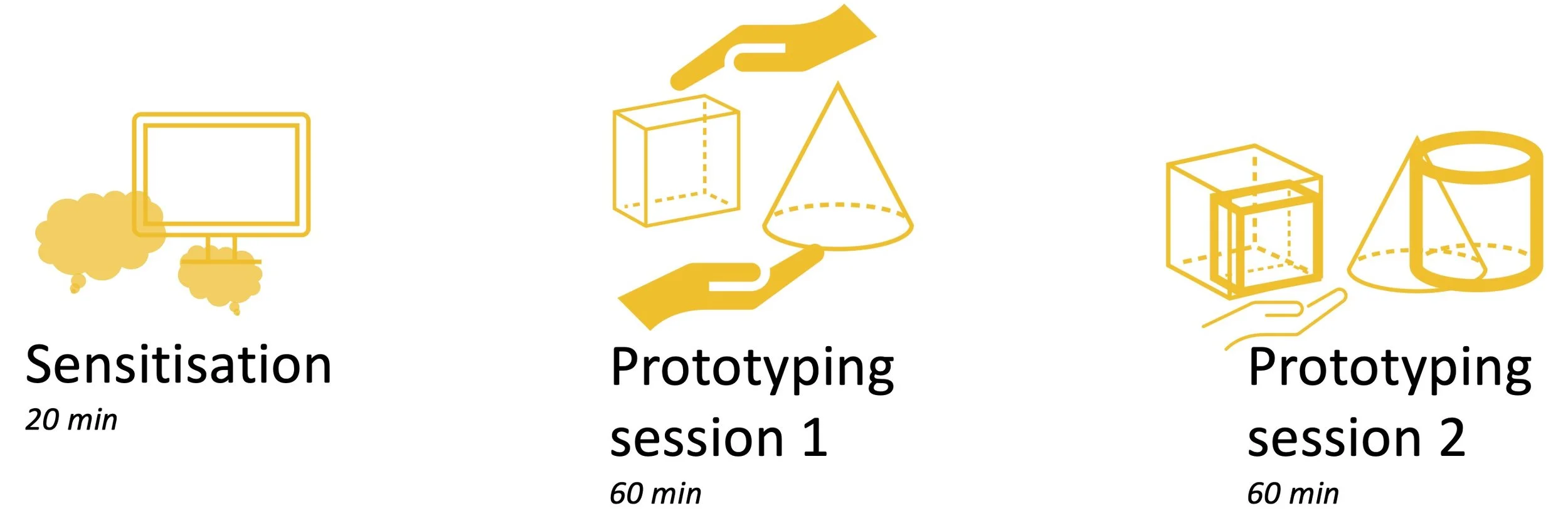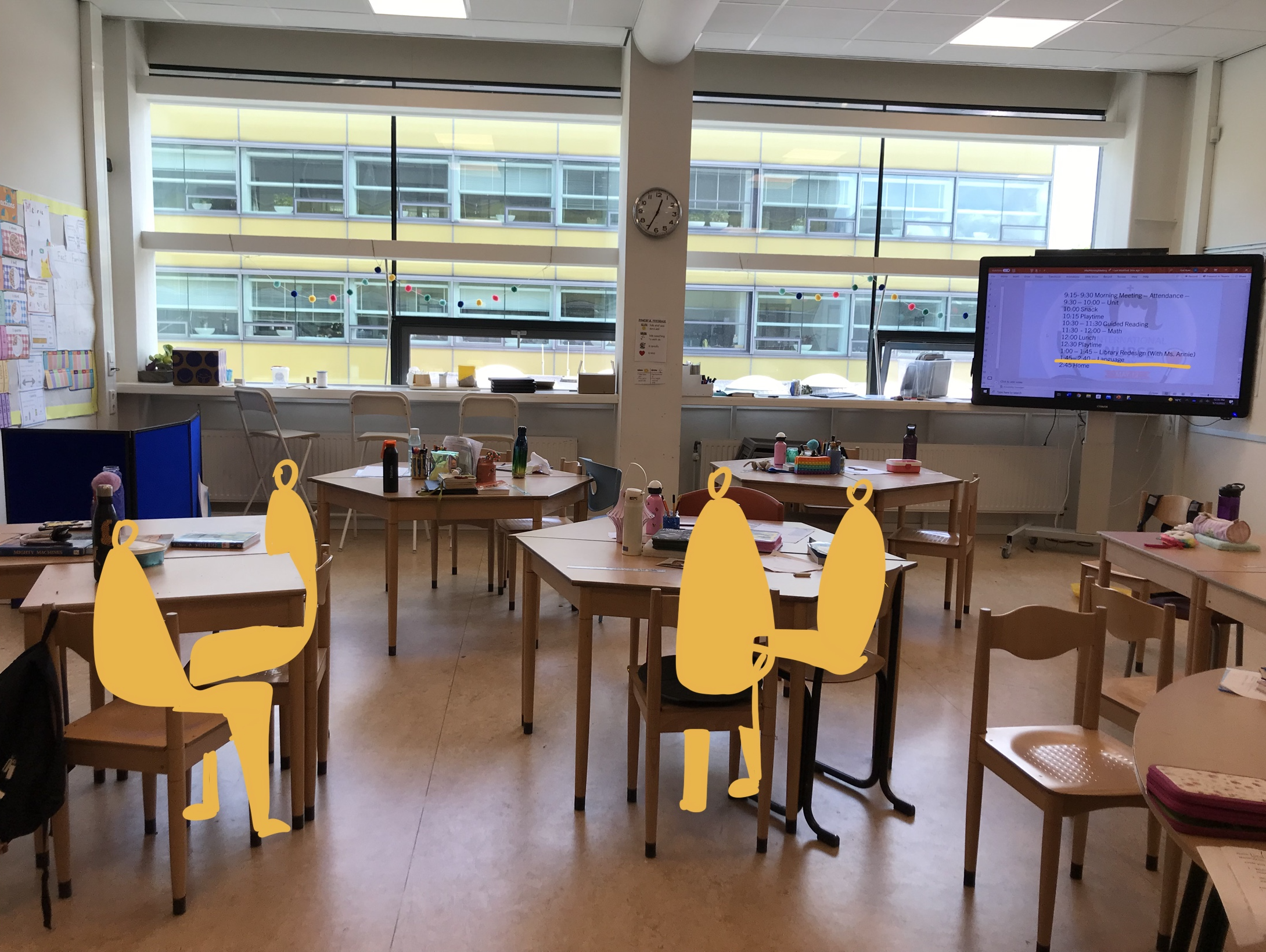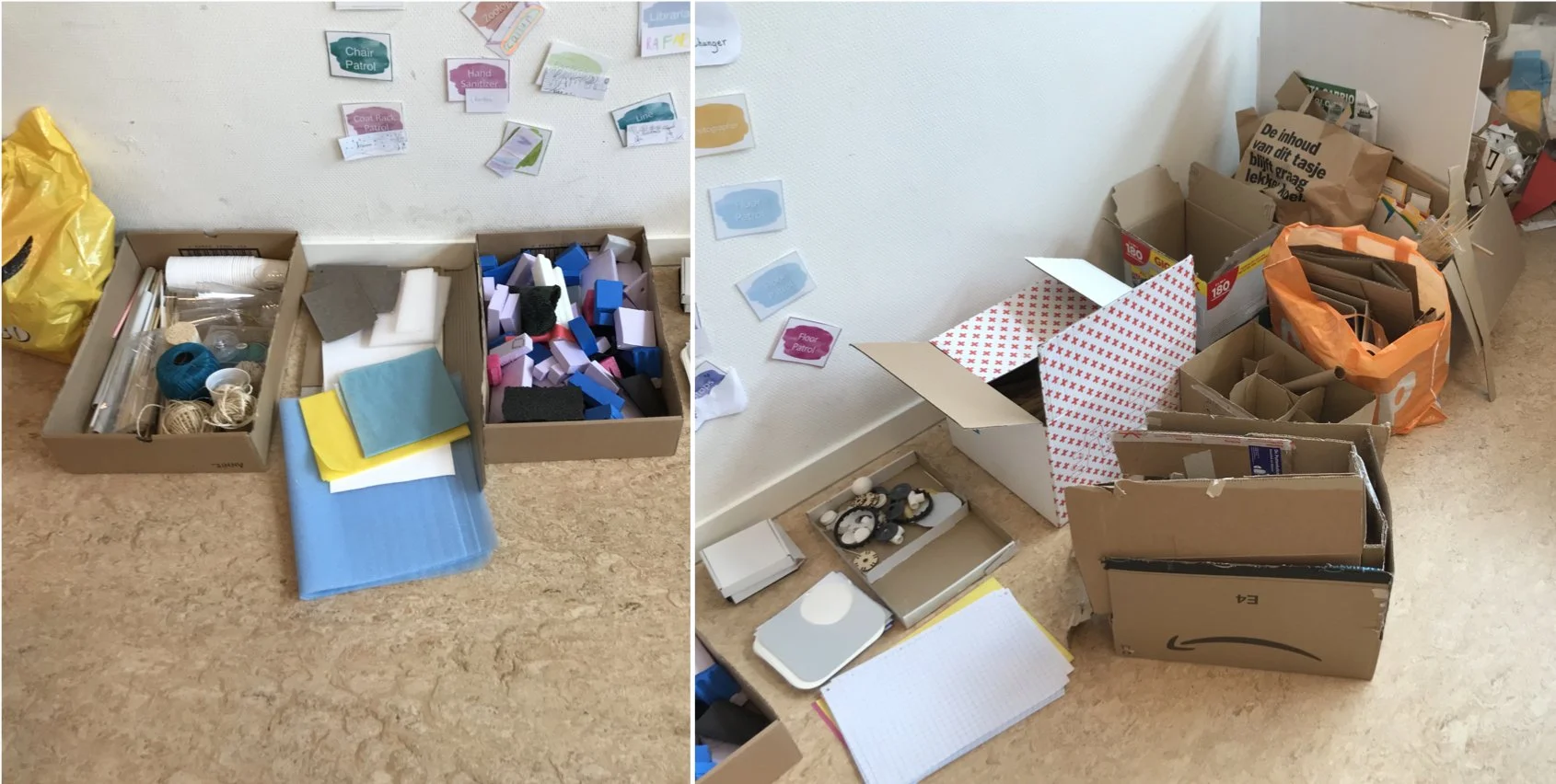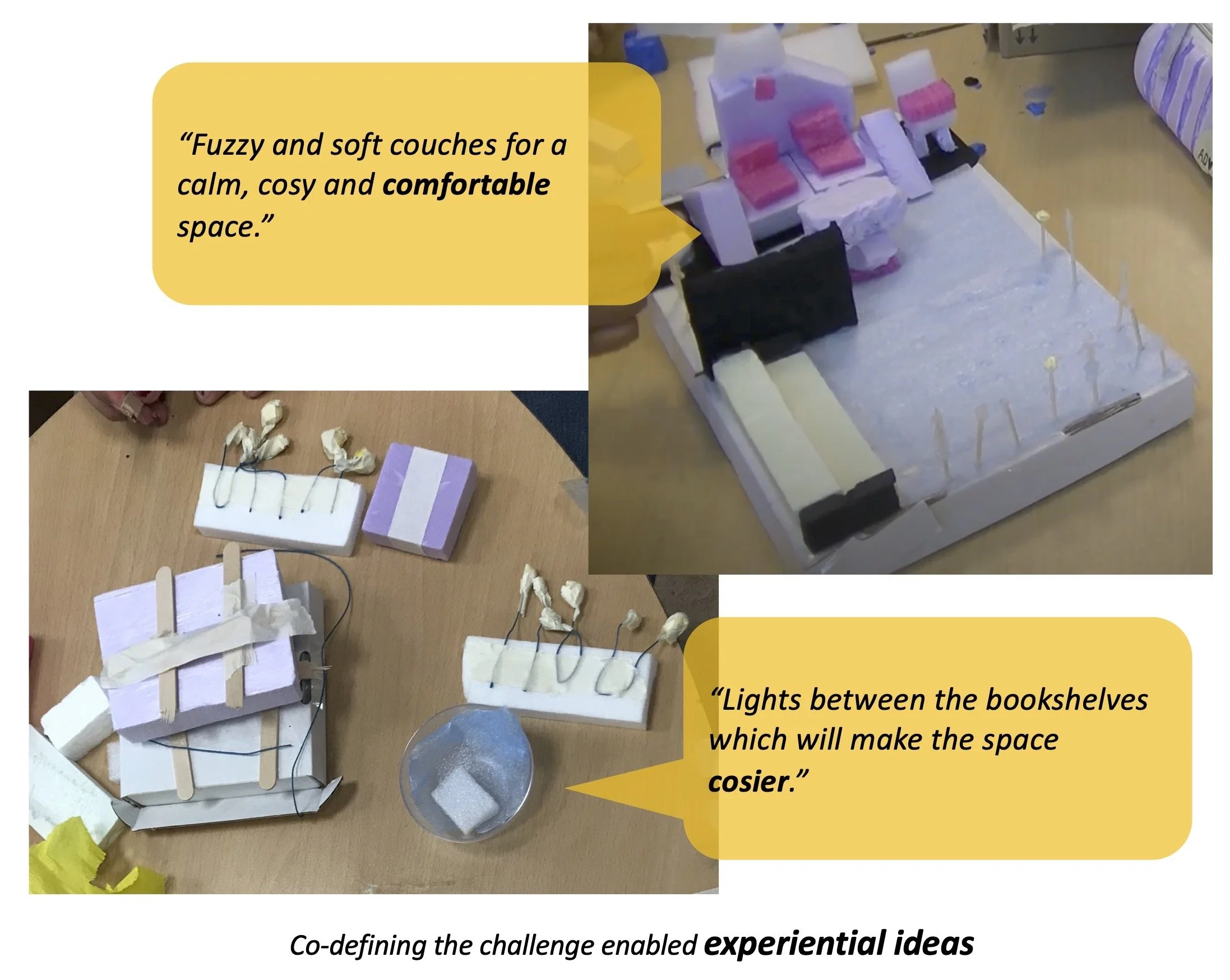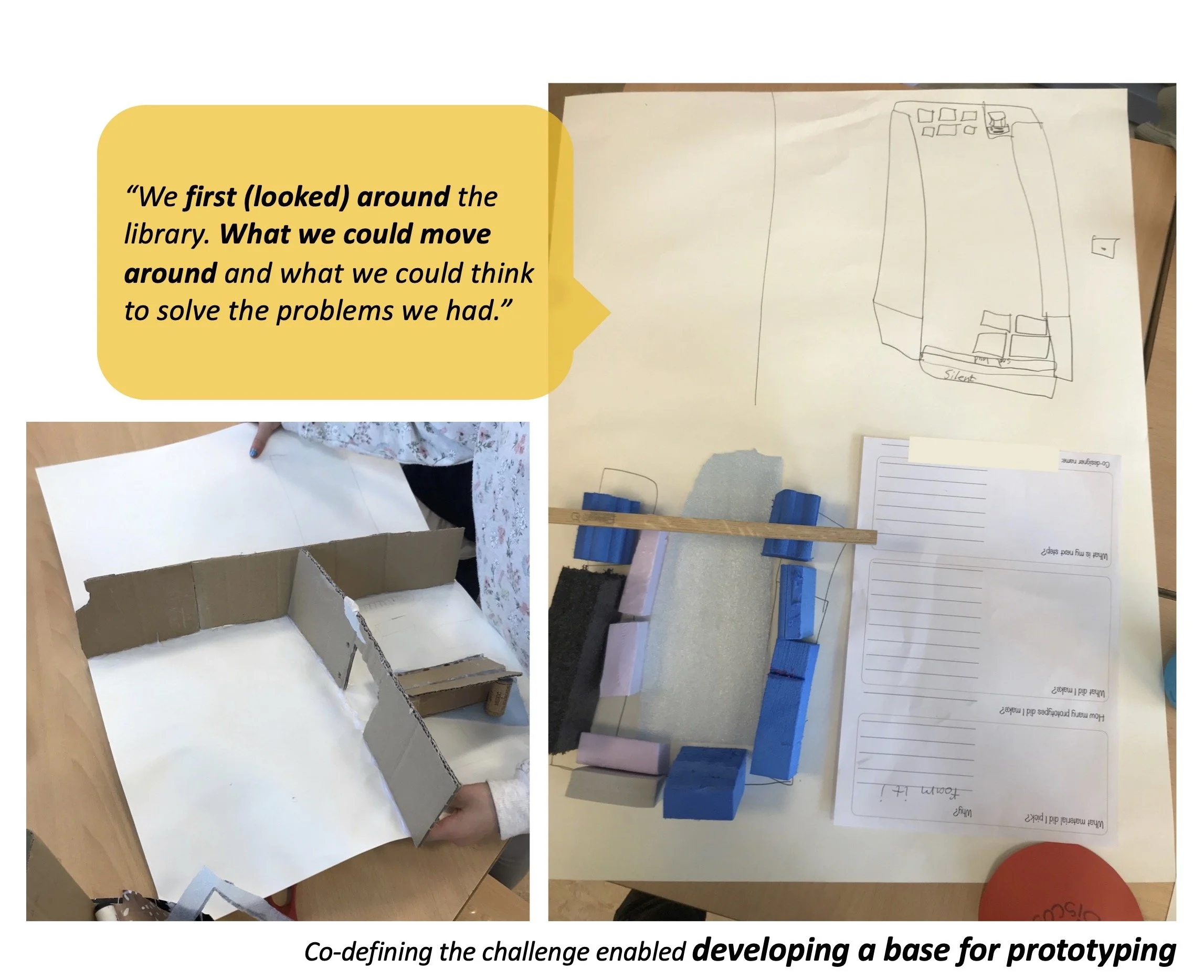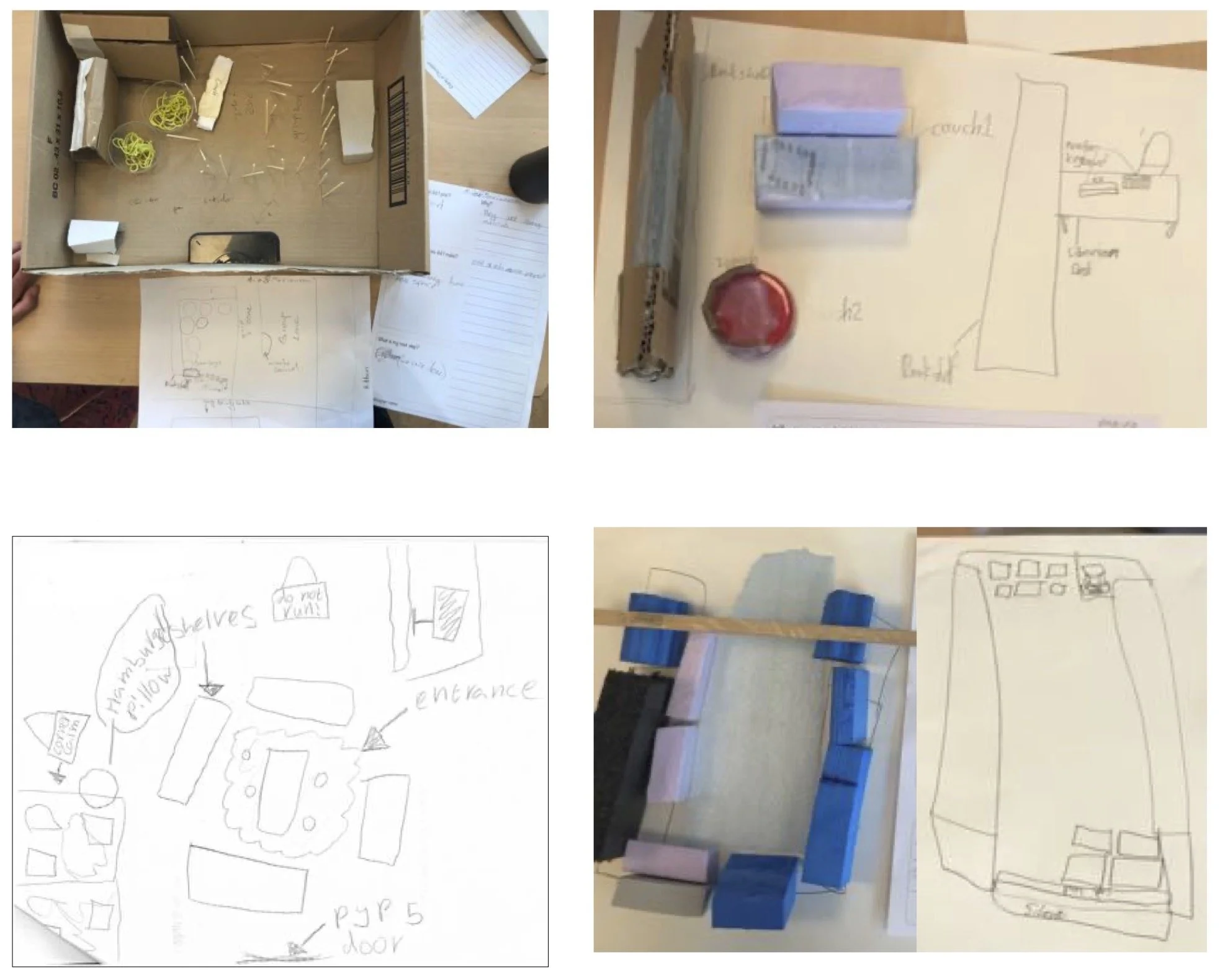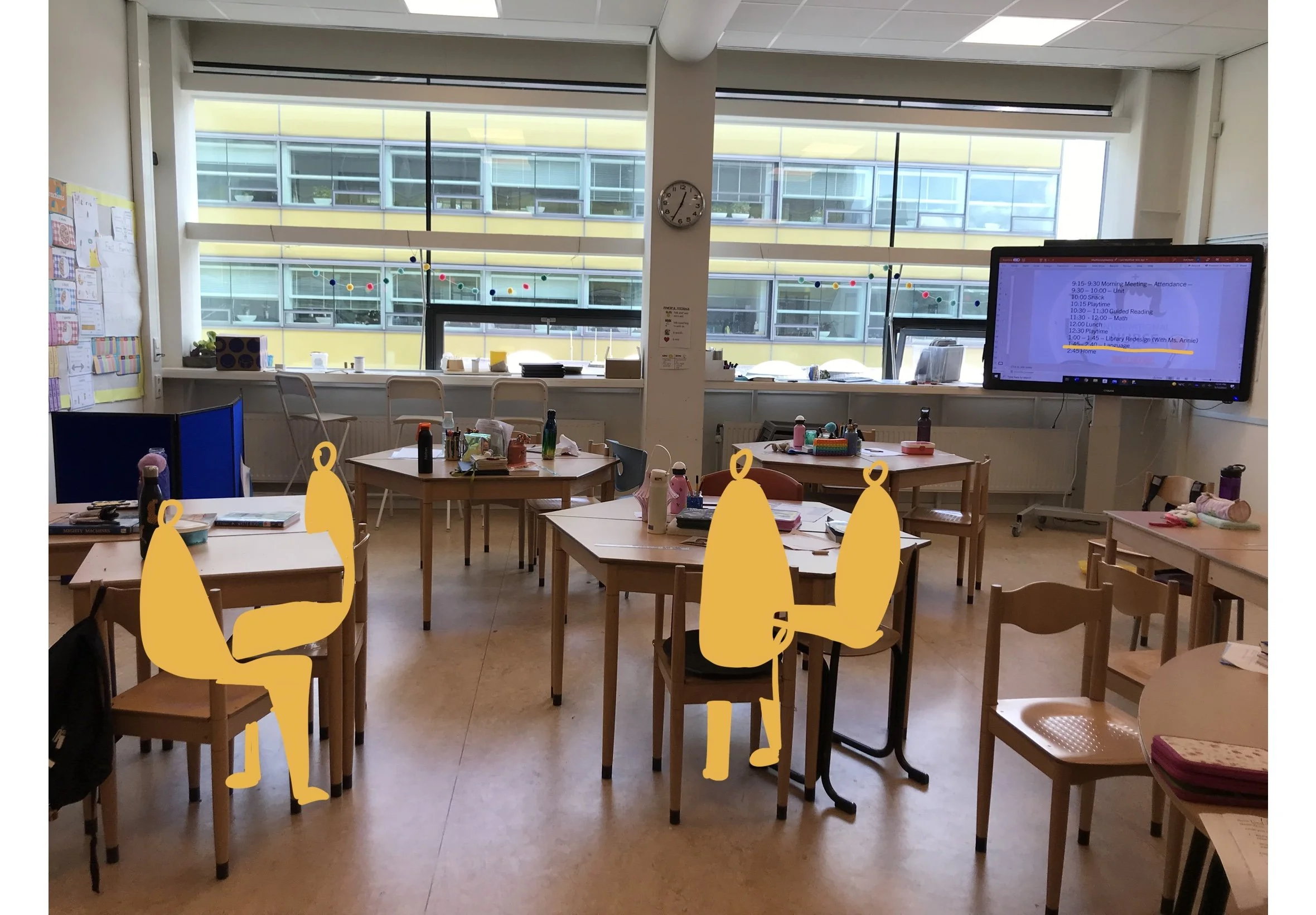Research & Co-design with Children
Purposeful Prototyping for Ideation
Conference Paper | Research Project ↓
People Involved
Co-Author, Mentor and Supervisor : Mathieu Gielen
Acknowledgements to the school and class teacher, librarians and the children
Place and Time
2021-2022
TU Delft, Faculty of Industrial Design Engineering, Netherlands
Conference sponsorship by
My Role
Learnings
The research was focused on discovering enablers of purposeful prototyping amongst children. As a design researcher I was responsible for developing an interactive design project comprising of creative inquiry sessions and involving hands-on prototyping for a group of 20 children aged 8-12 years. A situated architectural design problem was collaboratively framed with the school - that of re-designing the children’s current library space. This enabled me to both create a relevant project for the school and children, and research on prototyping for design ideation with children.
Prior research on the topic of co-design with children and experiences of prototyping with children carried out by my supervisor supported the development of the research question.
The project allowed me to discover aspects of design prototyping with children, such as the value of co-defining the design problem, and reflective/ speculative dialogue.
It helped me delve deeper into designing creative sessions with children for both inquiry and prototyping design ideas. Plus, it enabled me to sharpen my skills as a design researcher, in this case as a translator of the children and school’s needs for their library into an architectural drawing that would help them re-design their library, while developing a relevant study on purposeful prototyping with children.
Prototyping to generate ideas, as part of the design process offers various learning opportunities to sharpen young novice designers’ design and making skills. This study situates itself within the landscape of Makerspaces and co-design with children as emerging opportunities of learning and skill building for children. From experiences of co-design with children it is often observed that children engage with outcome and object-focused model making or plain crafting with no intent of iterative prototyping for ideation.
Why did we embark on this study?
What did we explore and how?
This study describes the case of design prototyping sessions conducted with 20 children aged 8-11 years old as a classroom activity. The sessions were investigated and analysed to reveal
enablers and limitations to purposeful prototyping with children.
The classroom activities with the children following an International Baccalaureate, Primary Years Programme (IB, PYP), were held as follows:
A brief 20-minute sensitisation to introduce and define the design challenge was conducted a day prior to the first 45-minute design prototyping session with children. A second 45-minute prototyping session was held a week later with the same group of children in continuation. The class-teacher supported the sessions as facilitator and two librarians from the school participated as co-researchers.
What we found relevant for purposeful prototyping?
Co-defining the Design Problem
Providing low-level meaning flexible prototyping materials
Mid-prototyping interviews
Co-defining the Design Problem fostered ownership
Re-design of the library space was explored in its capacity to enable sound goals for children to prototype purposefully. It was selected as a design problem that the children would be familiar with, that would be relevant and motivating for them to engage with, and one with possibilities of multiple directions of exploration and many ideas.
The context of the design project was defined with children during the sensitisation by recollecting experiences of use and challenges in the given space, followed by brainstorming initial ideas for re-design. Once established, the design problem was presented on the screen throughout the first prototyping session with children.
Low-level meaning prototyping materials encouraged flexible interpretation and expression
Materials were selected to generate quick low-fidelity and flexible prototypes for ideation. Basic and generic materials instead of fancy materials such as glitters or stickers or specific materials such as scaled furniture or puppets were provided for prototyping. These were chosen for their low-level meaning and capacity to build, think and express with. A variety of material and tactile characteristics were provided to offer inspiration for ideation. These ranged from base materials such as paper, cardboard, foam sheets, fabric pieces, shoe boxes to foam pieces of different shapes, plastic cups, odd objects and knick-knacks; material often used for design prototyping.Tinkering material such as needle and thread, beads, buttons and sticks along with crafting material to join, combine, paste or modify prototypes was available for prototyping.
Mid-prototyping Interviews can encourage reflective and speculative ideation
Interviews were conducted by two school librarians who participated as co-researchers, 10-15 minutes after the start of the prototyping session. These were intended to engage children in reflective discussions and audio-recorded for documentation. The questions addressed the prototyping activity in terms of what, why and how children were building, development or change in ideas and next steps of prototyping.
Various forms of prototyping
The prototypes took the form of physically built 3D models supported by drawings, sketches,filled-in templates and in process interviews. It was important to capture both, prototyping and ideas as rich stories that transcend the visually apparent characteristics of the built prototypes, because a lot of details, ideas and motivations lie in the unexpressed forms of models and drawings.
While Discussions cones were provided to encourage children to initiate discussions, wherein children could raise their cone if they had a doubt or question or something to discuss. These quickly forgotten and out the window as soon as children started making. And the templates that were meant to enable reflection of why children picked certain materials, were left blank by some children and others filled it in only during the last 10 minutes of the session, as these were being collected. And lacked any richness of their prototypes or ideas.
In Conclusion
Co-defining the design challenge to foster ownership
Providing a variety of low-level meaning prototyping materials to encourage flexible interpretation and expression
Engaging in mid- prototyping discussions to encourage reflective and speculative ideation
We define as pillars of purposeful prototyping
Future scope of Research
While the familiarity with the problems enabled ownership and detailed exploration of problem, other forms of sensitisation should be explored to enable ideation of distant, unfamiliar or at times ‘unreal’ concepts for a given problem.
Sensitisation activities to encourage
There is value and future potential in developing reflective & speculative prompts to enable design conversations.
Research on constructive design feedback dialogues amongst young novice designers and frameworks to encourage speculative responses can support further exploration of prototyping dialogues with and amongst children.





